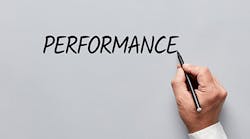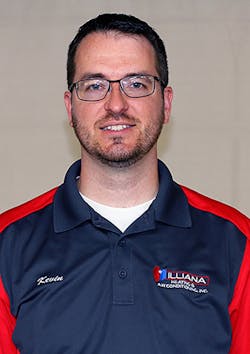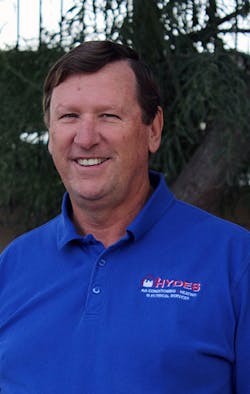What and how to pay employees is one of the biggest stressors for business owners. You want to be fair, but you also want to ensure the business makes a profit. Paying a set number of dollars per hour is the easiest way to go — we’re all familiar with this model because many of us started our work lives with hourly wage jobs.
However, many home services businesses such as HVAC contracting firms switched to performance-based pay models for their service and install technicians. In this model, pay is based solely on the tech’s performance — how many customers’ problems he can solve in a day.
Cedar Lake, Ind.-based Illiana Heating and Air Conditioning employs four installers, three service technicians and three maintenance techs. The subject of performance-based pay came up in 2011 at a Service Nation boot camp.
“I was still very new in the industry at the time, still learning the business,” recalls Kevin Frump, Illiana’s general manager; he worked in manufacturing engineering before joining his father-in-law’s company in 2010. “And what they were saying about performance-based pay was intriguing to me. I knew one of the challenges we were going to have as we wanted to grow and be more profitable was this whole labor-management piece.”
On hourly pay, he adds, the only way technicians can make more money is if they work more hours. “When you're trying to grow as a company, you're trying to do as much work as you can with the folks you have in place,” Frump explains. “And you'd rather pay those people more to do more work.”
The issue is that HVAC repair and install work has peaks and valleys, and hourly-wage techs are always concerned about getting enough hours in, Frump notes. And that can mean the same type of job can take different amounts of time on other days.
The issue is that HVAC repair and install work has peaks and valleys, and hourly-wage techs are always concerned about getting enough hours in, Frump notes. And that can mean the same type of job can take different amounts of time on other days. An install crew may take longer on a Tuesday water heater job because techs want their hours. The same job will be shorter on a Saturday because techs want to get home to their families.
“In an hourly pay system, the motivation for guys to get done faster is usually their manager breathing down their neck,” he says. “Their incentive to get things done faster didn't exist because if they got it done faster, they went home and stopped getting paid. What we wanted was for them to finish faster so we could give them more work to do and continue to grow as a company."
This “conflicting motivation” was a challenge that Illiana’s management team realized could be solved with performance-based pay. So the HVAC firm made the switch to performance pay in 2016 for its installers only. “For us, performance pay is not really about paying less,” Frump explains. “It enables us to pay techs more when they do more work.”
Hyde’s Air Conditioning, located in Indio, Calif., has five two-person install crews and 11 service and maintenance techs. The company, also a Service Nation member, made the jump to performance-based pay on the service side nearly 20 years ago.
“If you're hourly, you're paid based on how slow you are,” notes Michael Hyde, general manager of his family’s HVAC company with nearly 50 years in the industry. “If you're a more experienced staff person and can do a job faster, you're paid less. So, it doesn't make sense that you're paying the inexperienced slow guy more than the experienced staff guy.”
Setting the rate
Let’s face it — people don’t like it when you mess around with their pay. They get anxious as there is a certain amount of security in a regular 40-hour/week paycheck. Hyde took advice from a fellow contractor he met at an industry event on broaching the subject to his service techs.
“We invited those we felt were ready for performance pay and we gave them a choice: they could stay at hourly or move to performance pay,” he says. “We let them track the week and see how they would have done. They realized they could make more money with performance pay rather than hourly; they never went back to the hourly model.”
The most difficult part is determining what the pay rate is, Hyde says. He went with a task-based system, very similar to the flat-rate pricing model he uses for customers. Each task is assigned a dollar amount, so the techs know what they’re getting paid on each job.
The most difficult part is determining what the pay rate is, Hyde says. He went with a task-based system, very similar to the flat-rate pricing model he uses for customers. Each task is assigned a dollar amount, so the techs know what they’re getting paid on each job.
When it was time to switch to performance pay on the install side, Hyde got input from his installers, since some tasks are more difficult depending on the location of the install — attic vs. garage in the summer. So the pay is more if the install is in the attic rather than the garage or basement.
Hyde also had to take into account California’s strict overtime rules. Since overtime is based on hourly wages and how much a tech worked that week, Hyde tweaked his performance-pay system to resemble an hourly/bonus system.
Today, all new technician hires at Hyde’s Air Conditioning start at an hourly rate and move to performance-based compensation.
“We want to make sure they’ve been training properly, make sure they're doing it our way,” Hyde notes. “We bring them in as maintenance techs. They might be several years as a maintenance tech, and then they move up, rather than bringing in a service tech from another company. Once they’ve proven themselves or their probation period is up, then they can move to performance pay.”
Frump spent time looking at existing performance-pay systems — including ones that pay techs a percentage of a job — before deciding task-based was the way to go.
“We settled on a system based around the idea of payroll units, that a job has a standard of how long it should take on average; that becomes what the job is worth,” he explains. “It makes it very predictable from a management perspective.”
Frump started a two-month pilot with his installers “because there are fewer moving parts” and ran simulations with them so they understood they could make more by moving to performance pay. “I wanted to get everyone comfortable with the idea of what this looks like,” he says. “I have the dollars of pay they generated, divided by the hours they worked, resulting in their effective hourly rate.”
Illiana implemented a base pay structure to accommodate for drive time and other “unplanned” times on the service side.
“An installer starts his day knowing what he's going to do, and all the materials are prepared for him,” Frump explains. “A service tech essentially walks up blind, not knowing if this is going to be a 45-minute call or a 2 hour and 45-minute call. But we still use a standard time and pay associated with what you're going to do.”
Illiana also uses a flat-rate pricing model for customers, and performance-based pay for technicians fits right in. “That's part of the beauty of a performance-pay system on both sides, but especially on the service side, when you use flat-rate pricing,” Frump explains. “The job may go smoothly and last an hour, or it may go terrible and be three hours. But I've given this customer a price, so when I'm building that price, I'm doing my best to make sure I'm profitable all the time.”
Quality Control
Ensuring that technicians are performing quality work in a performance-based system is crucial, Hyde says.
‘You need a quality assurance system; you don’t want your techs racing to get tasks done and maybe missing something,” he explains. “So there has to be a process in place to ensure the job was completed correctly so we don’t get a callback. It can be done with pictures and different follow-ups.”
Frump agrees: “In a performance-based pay system, the challenge shifts more to the safety-quality side. You need to make sure you have compensating controls. Safety has to be a top concern; techs can't be rushing through things to the point that they're endangering themselves or the customer. We have quality checks in place to ensure that our Illiana Heating standard is still met.”
Both Hyde and Frump say that moving to a performance-based pay system for their technicians has paid off for their respective companies.
“We have a fair system and we're always willing to adjust when we need to, but I haven't had a desire to go back to hourly pay,” Hyde says. “You can hit key performance indicators easier because you know what each task is worth.”
Frump notes: “When we switched to the performance-pay system from the hourly-pay system, we found we could do pretty much twice the amount of work with the same number of people and trucks. And it allows our techs to do what they are capable of and get compensated for it — even if they are efficient.”
Kelly Faloon is a contributing writer to Contracting Business magazine and principal of Faloon Editorial Services. The former editor of Plumbing & Mechanical magazine, she has more than 20 years of experience in the plumbing and heating industry and B2B publishing. Faloon is a journalism graduate of Michigan State University.












